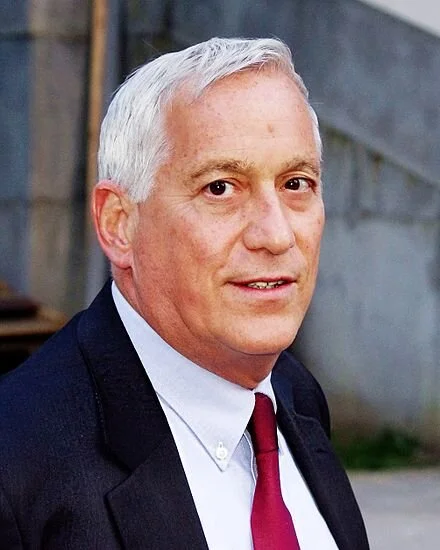
David Warsh: From eugenics to molecular biology
Representation of the now famous “Double Helix’’: Two complementary regions of nucleic acid molecules will bind and form a double helical structure held together by base pairs.
SOMERVILLE, Mass.
It was so long ago that I can no longer remember with any precision the pathways along which the book started me towards economic journalism. What I know with certainty is that The Double Helix: A Personal Account of the Discovery of the Structure of DNA (Athenaeum), by James Watson, changed my life when I read it, not long after it was first published, in 1968. Watson’s intimate account of his and Francis Crick’s race with Linus Pauling in 1953 to solve the structure of the molecule at the center of hereditary transmission was thrilling in all its particulars. I went into college one way and came out another, with a durable side-interest in molecular biology.
Thus when Horace Freeland Judson’s The Eighth Day of Creation: Makers of the Revolution in Modern Biology (Simon and Schuster), came along, in 1979, I marveled at Judson’s much more expansive collective portrait of the age. And when Lily Kay’s The Molecular Vision of Life: Caltech, the Rockefeller Foundation, and the Rise of the New Biology (Oxford) came out in, in 1993, I was quite taken by the institutional background it supplied.
Kay told the story of how the mathematician Warren Weaver in the 1930s decisively backed the Rockefeller Foundation away from its ill-considered funding backing of the fringes of the eugenics movement – human engineering through controlled breeding – by initiating “a concerted physiochemical attack on [discovering the nature of] the gene… at the moment in history when it became unacceptable to advocate social control based on crude eugenic principles and outmoded racial theories.”
Not until 1938 would Weaver describe his campaign as “molecular biology.” In the dozen years after 1953, Nobel prizes were awarded to 18 scientists for investigation of the nature of the gene, all but one of them funded by the Rockefeller Foundation under Weaver’s direction.
For the past couple of weeks I have been reading Code Breaker: Jennifer Doudna, Gene Editing, and the Future of the Human Race (Simon & Schuster, 2021), by Walter Isaacson. Doudna, you may remember (pronounced Dowd-na), shared the Nobel Prize in Chemistry last autumn with collaborator Emmanuelle Charpentier “for the development of a method of genetic editing” known as the CRISPR/Cas 9 genetic scissors. The COVID pandemic prevented the journeys to Stockholm that laureates customary make to deliver lectures and accept prizes. Medalists will be recognized at some later date. At that point, expect the significance of the new code-editing technologies to be emphasized. The new know-how recognized in 2020 Prize in Chemistry is probably the most important breakthrough since the Nobel Prize in Physiology or Medicine went to Crick, Watson and Maurice Wilkins, in 1962. Instead of the sterilization and other forceful measures envisaged by the eugenics movement, CRISPR promises to gradually eliminate hereditary disease.
Three themes emerge from Code Breaker. The first is how much has changed with respect to gender, in biological science at least. X-ray crystallographer Rosalind Franklin died in 1958, four years before she might have shared the prize. (Dead persons are not eligible for the award.) She was cruelly disparaged in Watson’s book, despite the fact that her photographs were crucial to the discovery of the helical structure of the gene.
Opportunities for female scientists had begun to open up by the time that The Eighth Day was published, but women hadn’t yet reached levels of professional accomplishment such that their photographs would appear except rarely in pages dominated by White males. Doudna, born in 1964, and Charpentier, born in 1968, encountered abundant opportunities.
A second theme, less stressed, underscores the extent to which the tables have turned over the last century with respect to the importance attached by scientists to race. Strongly held view about the dispersion of genetic endowments across various populations are nothing new, but, as The New York Times put it a couple of years ago, “It has been more than a decade since James D. Watson, a founder of modern genetics, landed in a kind of professional exile by suggesting that black people are intrinsically less intelligent than whites.”
A third theme, the main story, is Doudna’s decision, as a graduate student in the 1990s, to study the less-celebrated RNA molecule that performs work by copying DNA-coded information in order to build proteins in cells. All this is clearly explained in Isaacson’s book, in relatively short chapters and sub-sections. The effect of this mosaic technique is to briskly move the story along.
After many twists and turns, Doudna and Charpentier showed in June 2012 that “clustered regularly interspersed palindromic repeats” (hence the easy-to-remember-and- pronounce acronym CRISPR), “Cas9” being a particular associated enzyme that did the cutting work, could be made to cut and replace fragments of genes work in a test tube. Within six months, five different papers appeared showing that such scissors would also work in live animal cells.
The famed Broad Institute of MIT and Harvard, in Cambridge, where much important biomedical and genomic research is conducted.
An epic patent battle ensued, involving claims to various ways in which CRISPR systems could be used in different sorts of kinds of organisms. A nearly metaphysical argument developed: Once Doudna and Charpentier demonstrated that the technique would work on bacteria, was it “obvious” that it would work in human cells? Rival claimants included Doudna, of the University of California at Berkeley; Charpentier, of Umeå University, Sweden; geneticist George Church, of the Harvard Medical School; and molecular biologist Feng Zhang, of the Broad Institute of MIT and Harvard.
Church and Zhang are colorful characters with powerful minds and different scientific backgrounds. Their complicated competition with Doudna and Charpentier is said to reprise the race of Watson and Crick with Pauling forty years before. Well-disposed toward all four principals, author Isaacson spends a fair amount of effort interpreting their rival claims. At the end of the book, he expresses the hope that Zhang and Church might one day share a Nobel Prize in Medicine for their CRISPR work.
If there is a better all-around English-language journalist of the last fifty years than Isaacson, I don’t know who that might be. Born in 1952, he grew up in New Orleans, went to Harvard College and then Oxford, as a Rhodes Scholar, before beginning newspaper work. He joined Time magazine as a political reporter in 1978; by 1996 he was its editor. To that point he had written two books (the first with Evan Thomas): The Wise Men: Six Friends and the World They Made; (1986); and Kissinger: A Biography (1992).
In 2001 Isaacson left Time to serve as CEO of CNN. Eighteen months later he was named president of the Aspen Institute. There followed, among other books, biographies of Benjamin Franklin (2003), Albert Einstein (2007), Steve Jobs (2011) and Leonardo da Vinci (2017). He resigned from the Aspen Institute in 2017 to become a professor of American History and Values at Tulane University.
As editor of Time, Isaacson took a call in 2000 from Vice President Al Gore, asking on behalf of President Clinton that the visage of National Institutes of Health Director Francis Collins be added to that of biotech entrepreneur J. Craig Venter on the cover of a forthcoming issue. A crash program to sequence the human genome was threatening to break apart after the abrasive Venter devised a cheaper means and formed a private company.
Isaacson consulted his sources, including Broad Institute president Eric Lander, a friend from Rhodes Scholar days, and complied. Science journalist Nicholas Wade wrote the story. At least since then, Isaacson has been involved at the highest levels in the story of molecular biology. He is uniquely well-qualified to describe the most recent segment of its arc, and, in the second half of the book, to lay out the many thorny social choices that lie ahead.
David Warsh, a veteran columnist and an economic historian, is proprietor of Somerville-based economicprincipals.com, where this column first ran. © 2021 DAVID WARSH, PROPRIETOR
Walter Isaacson
Chris Powell: DNA doesn't tell you much; little incentive for compromise in legislature
Solving crime and exonerating the wrongly accused are no longer the main purposes of analyzing human deoxyribonucleic acid, or DNA. No, DNA analysis now is used most often in the fast-growing business of tracing ancestry.
Television commercials proclaim that if you mail a swab from your mouth, a DNA analysis company can tell you not just which ethnicgroups you derive from but even what your culture is and who you are.
It's fun and may be slightly more accurate than an astrological forecast but it's also pathetic. For while genes determine superficial features -- complexion, eye shape and color, hair type -- as well as susceptibility to certain ailments, the connection of genetics with culture and character is small, since culture and character are much more matters of upbringing, environment, experience and insight. Indeed, connecting genetics with culture and character is the ugly, old rationale for ethnic stereotyping, racism, and genocide.
The commercials for DNA analysis also suggest that culture is as trivial as mode of dress -- a flowered hat, lederhosen, a tartan kilt -- rather than civic and religious beliefs, literature, customs, history, an entire way of living.
Just as people who think they have lived previous lives always imagine themselves to have been ancient Egyptian princes or princesses rather than sweaty and exhausted slaves who piled stones on the pyramids, people hoping that DNA will tell them who they are may not realize that, as the saying goes, if you trace your ancestry back far enough you'll always find a horse thief.
One may be glad of kinship for increasing one's appreciation of humanity. But no one deserves credit or discredit for his ancestors, and genes do not determine identity. Especially in the United States, still the land of freedom and opportunity, DNA is too lazy an explanation for anything. People are far more what they make themselves.
* * *
Calls for compromise to break the stalemate over Connecticut's state budget sound high-minded but contribute nothing. Exactly who should compromise and how?
The conflicting positions on the budget are fairly principled.
Most Democrats in the General Assembly want to raise taxes a lot to preserve the status quo in state and municipal government.
Gov. Dan Malloy wants to raise taxes a little less and to transfer state aid from suburbs to cities.
And Republican legislators and the eight Democratic legislators who voted for the Republican budget want to raise taxes much less and sharply reduce spending on higher education.
No one has much political incentive to compromise.
Governor Malloy is not seeking re-election next year and without a budget he seems empowered to allocate money arbitrarily. There may be lawsuits about this but what court is more empowered than the governor to run the state without a budget?
Most Democratic legislators were elected by a party dominated by the government and welfare classes and so cannot impose sacrifice without jeopardizing their political careers. Already the enforcer of the government and welfare classes, the Working Families Party, is challenging the renegade Democrats for re-election.
And having passed a budget that the governor has vetoed, Republican legislators can claim to have done their job already and to be the party of fiscal restraint, leaving the governor to take the blame for whatever happens because of his veto.
This stalemate could continue until the election next year.
Chris Powell is managing editor of the Journal Inquirer, in Manchester, Conn., and a frequent contributor to New England Diary.



